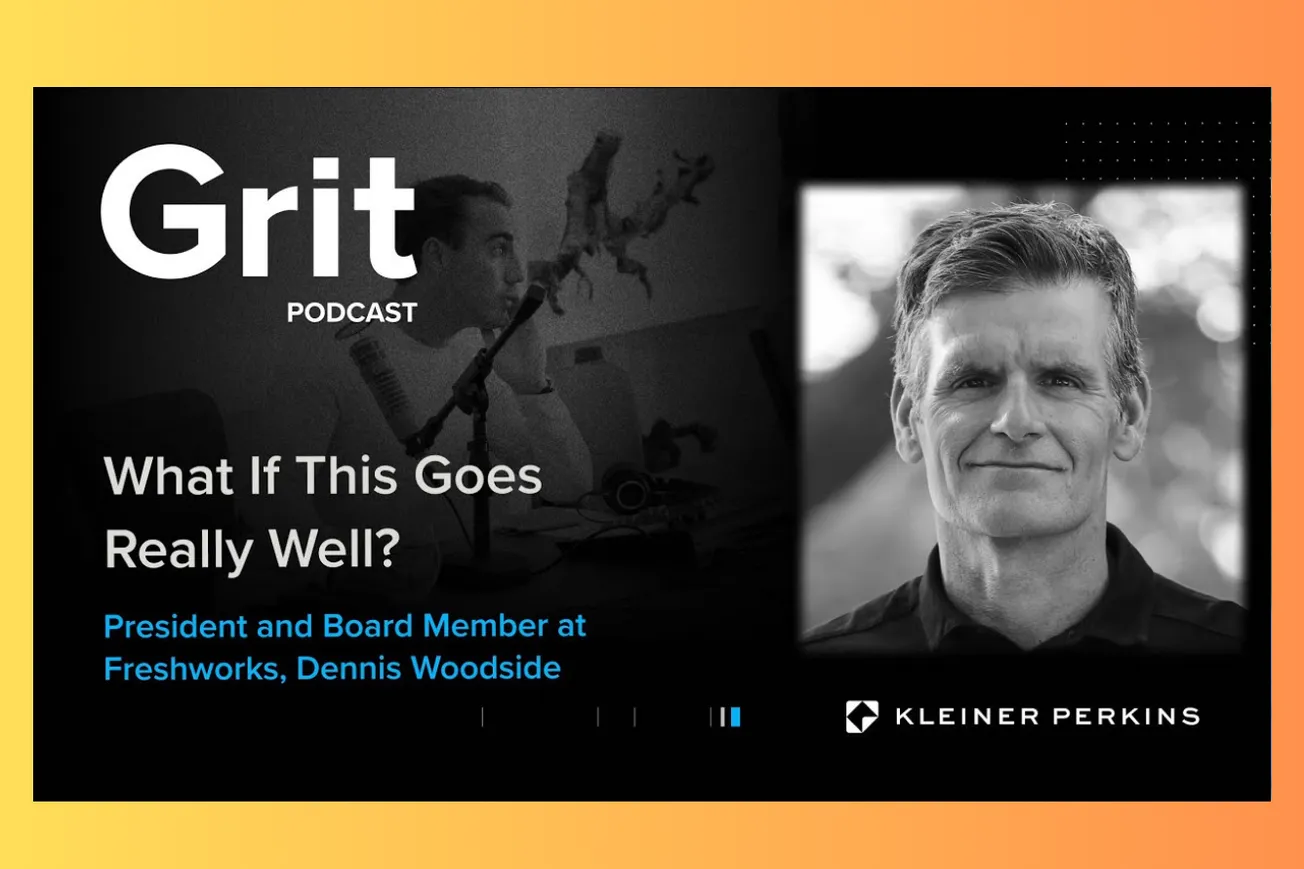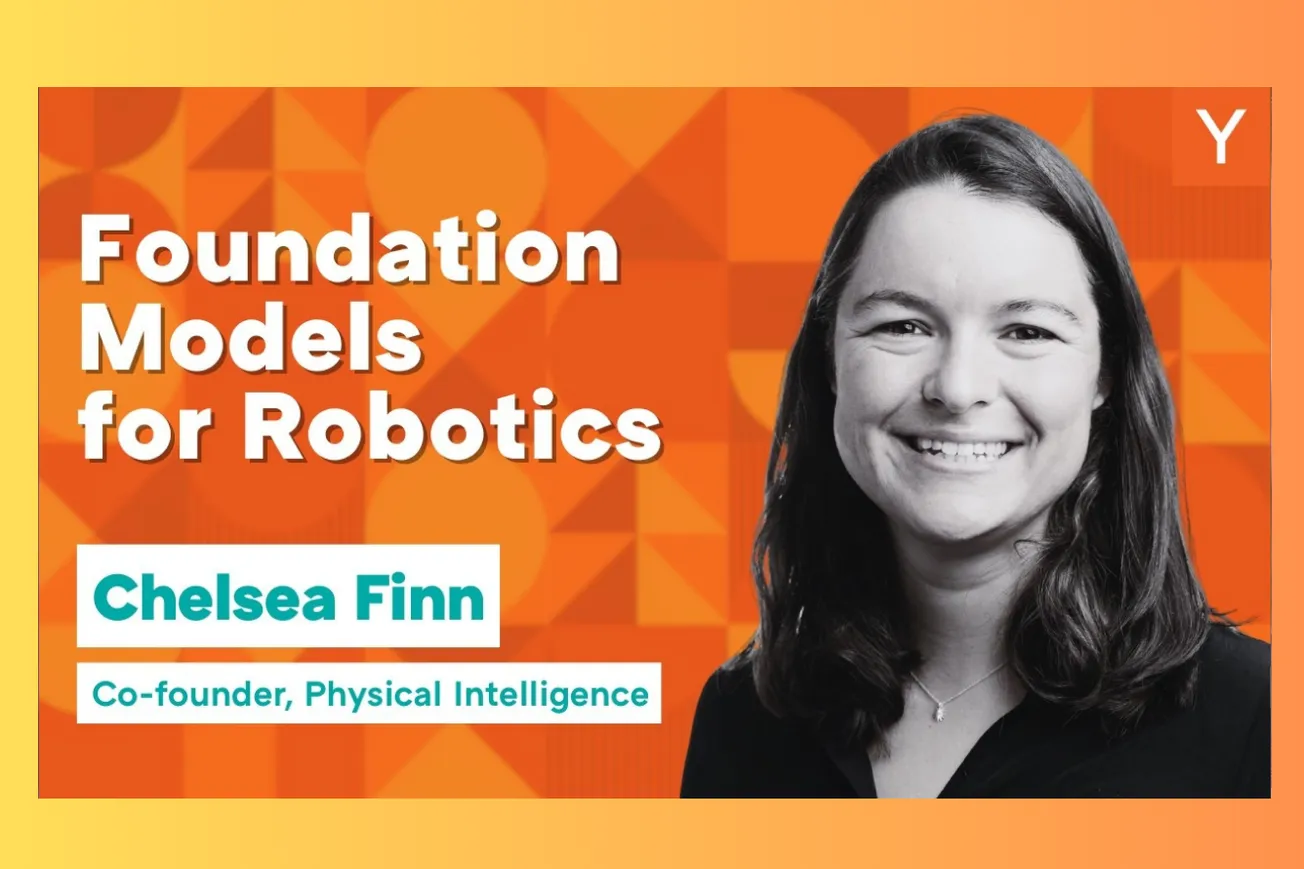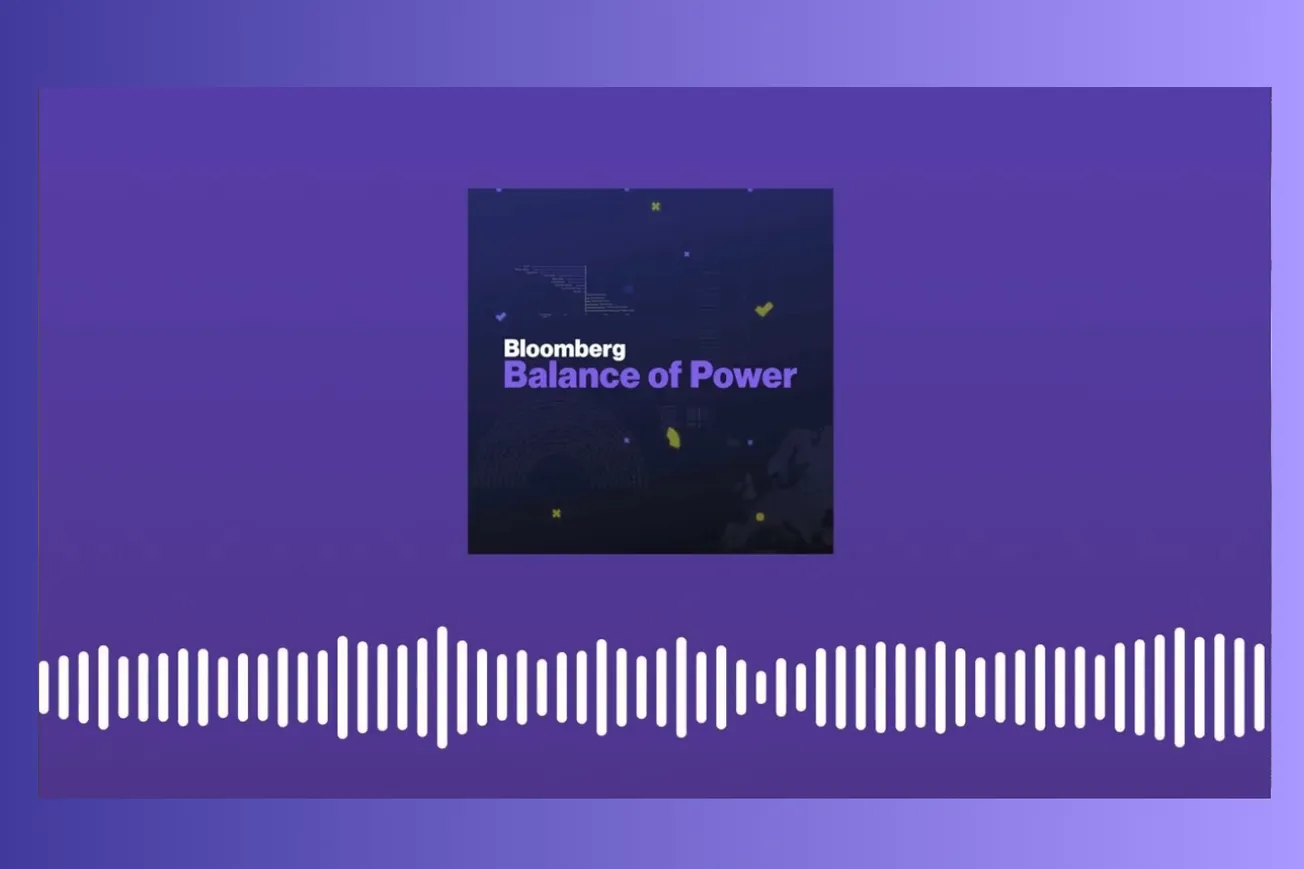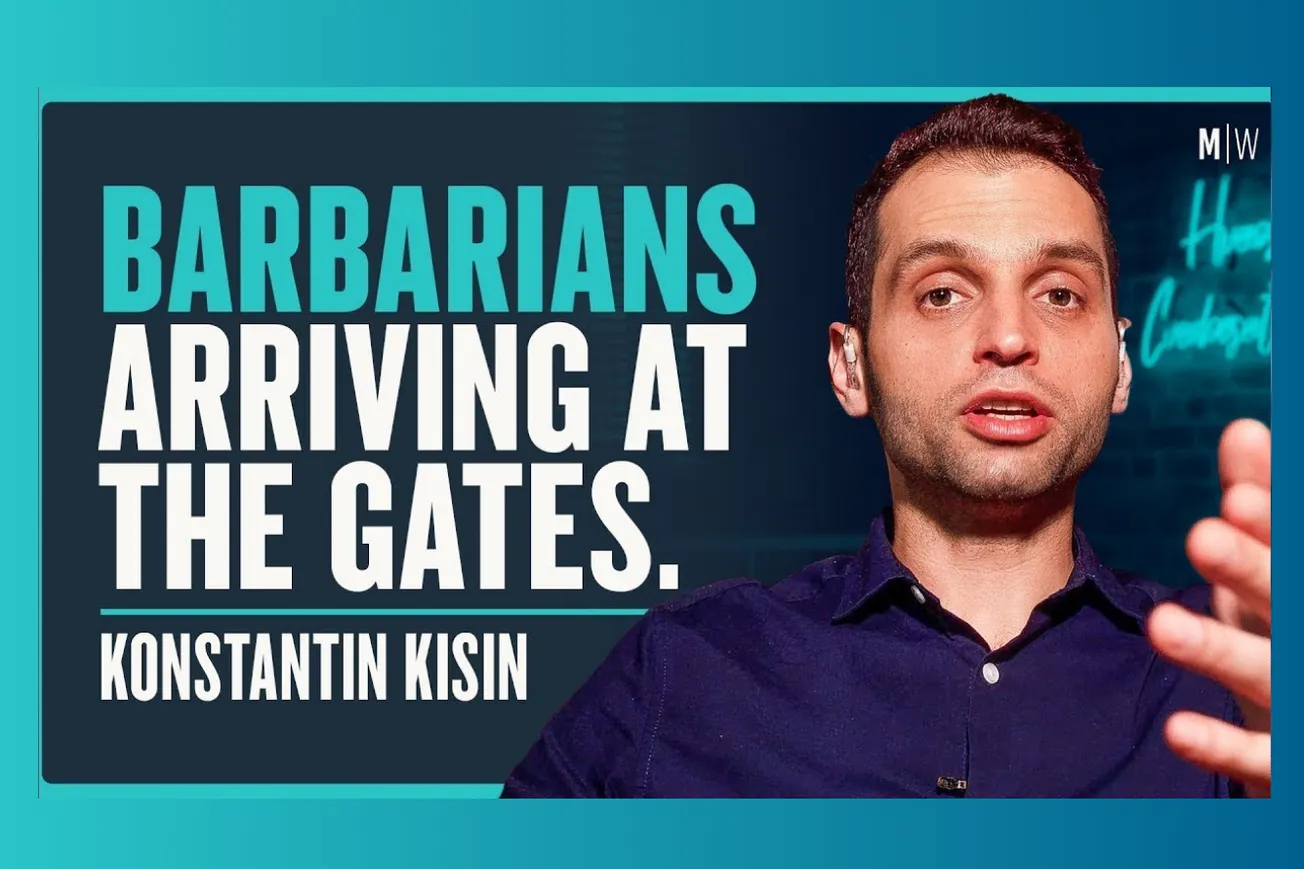Table of Contents
How the professional problem-solver who guided Motorola, Dropbox, and Impossible Foods mastered the art of scaling founder visions through relentless personal growth.
Dennis Woodside's journey from Google's thousand-employee problem-solver to Freshworks president reveals how choosing harder paths creates exponential career growth and unique value in scaling visionary companies.
Key Takeaways
- Professional problem-solving skills transfer across industries and functions when combined with intellectual curiosity and willingness to tackle unconventional challenges rather than proven career paths.
- Working with founders requires deep empathy for their personal and business struggles, understanding their motivations, and establishing clear role boundaries to enable effective collaboration and trust.
- Taking the harder path consistently—whether geographic assignments, challenging roles, or difficult companies—accelerates learning and creates unique competitive advantages that traditional career progression cannot match.
- Physical challenges like Ironman triathlons provide essential stress management and mental clarity for high-pressure executive roles, particularly during periods of intense organizational change and restructuring.
- Global business expansion requires cultural intelligence and local partnership, not just strategic analysis, as demonstrated by Google's successful international hiring approach using existing employees as cultural bridges.
- Successful scaling executives focus on hiring ambitious talent who "want your job" rather than comfortable performers, creating organizational momentum through collective drive and competitive excellence.
- The transition from successful individual contributor to CEO requires fundamentally different skills, particularly the emotional resilience needed for decisions affecting thousands of employees' livelihoods and organizational direction.
Timeline Overview
02:00–08:04 — Motorola CEO Transition: Google's $12.5 billion defensive acquisition, Android patent protection strategy, stepping into first CEO role with 20,000 employees and regulatory uncertainty
- 08:04–13:02 — CEO Reality Check: Difficulty of first-time CEO role, 5,000-person restructuring within three months, comparing Motorola challenges to Google's supportive high-performance environment
- 13:02–18:37 — Stress Management Philosophy: Using Ironman triathlons and daily exercise for mental clarity, 16-17 Ironman completions, competitive family culture with daughter in accounting at Wharton
- 18:37–26:23 — Career Foundation Building: Cornell rowing team selection process, Stanford law degree, McKinsey consulting, choosing unconventional assignments including Korea posting during Asian financial crisis
- 26:23–30:41 — Google Problem-Solving Role: Joining 1,000-person Google as business operations director, tackling supply chain, sales segmentation, and strategic planning challenges across multiple functions
- 30:41–39:12 — International Expansion Strategy: Larry Page's vision for 192-country presence, hiring scouts globally, building teams from Russia to South Africa using cultural bridge employees
- 39:12–48:38 — Dropbox Scaling Experience: Transitioning Drew Houston from single-player to enterprise product, building sales teams, AWS contract renegotiation, Chrome Panda excess symbol and discipline
- 48:38–52:19 — Career Transition Philosophy: Never taking breaks between roles, skiing alone realization, evaluating Freshworks opportunity through customer conversations and product-market fit validation
- 52:19–58:02 — Founder Collaboration Methodology: Global listening tours, crowdsourcing priorities from smart employees, building trust through communication clarity and role definition with founders
- 58:02–01:02:39 — Leadership and Hiring Philosophy: Interrogating processes for intentional vs accidental design, hiring ambitious people who want advancement, maintaining competitiveness and accountability focus
From Ad Executive to CEO: The Ultimate Trial by Fire
Dennis Woodside's transition from Google's ad sales leader to Motorola Mobility CEO represents one of Silicon Valley's most dramatic career pivots. Google's $12.5 billion acquisition of Motorola was primarily defensive—protecting Android partners from patent litigation by Apple, Microsoft, and Nokia. "Google had a choice. Google could potentially watch its Partners go away as they got sued or it could find IP that would defend against the patents that were being asserted against the partners," Woodside explains.
The acquisition created an unexpected leadership opportunity. Motorola Mobility, recently spun out from Motorola corporate, employed 20,000 people with $8 billion in revenue across mobile devices and set-top boxes. The business model was fundamentally broken—losing a billion dollars annually while struggling to transition from feature phones to smartphones in an increasingly consolidated market.
Woodside's first day as CEO illustrates the intensity of sudden executive responsibility. "Day one you walk in, you don't know when the deal is going to close and then you kind of get some signal from the lawyers hey it's going to be Thursday but you get that on a Tuesday and then on Thursday you're addressing the company and there's 20,000 employees."
- The acquisition timing required regulatory approval from China, creating months of uncertainty about deal completion and strategic planning limitations
- Motorola's business included both profitable set-top box operations and bleeding mobile device divisions requiring completely different strategic approaches
- The mobile business had proliferated dozens of product SKUs following pre-iPhone market strategy that became obsolete in the smartphone era
- Within three months, Woodside had to restructure operations and eliminate 5,000 positions while establishing credibility as a new leader
The experience taught brutal lessons about CEO accountability that no previous role could replicate. "When I say hard that is like a losing sleep type of thing where you know you're talking about people's livelihoods that you're affecting," Woodside reflects. The contrast with Google's supportive, growth-oriented environment made the challenges even starker.
Iron Man Mentality: Physical Challenge as Executive Tool
Woodside's commitment to Ironman triathlons—16 to 17 completions of the grueling 2.4-mile swim, 112-mile bike, and 26.2-mile run—reflects a philosophy that physical challenges build mental resilience essential for high-pressure leadership roles. The training provides both stress relief and cognitive clarity during demanding periods.
"I've always been engaged in kind of outside Pursuits athletic stuff... that's like free time the phone's off I can think I can just kind of get into my thoughts and I find coming out of that I have better Clarity more Focus calmer," he explains. The hour-daily commitment to training becomes non-negotiable preparation for executive performance.
The competitive mindset extends beyond personal achievement to family culture. Woodside's daughter competes alongside him in triathlons, with both winning their respective age groups. She studies accounting at Wharton while maintaining athletic excellence, demonstrating how competitive drive transfers across domains.
- Daily exercise routines provide essential mental space for processing complex business problems and maintaining emotional equilibrium during stressful periods
- The Ironman commitment requires long-term planning and consistent execution that parallels business leadership demands for sustained performance
- Physical challenges build psychological resilience necessary for handling high-stakes decisions affecting thousands of employees and millions in revenue
- Competitive family culture creates environments where excellence becomes normalized across multiple life dimensions
The training philosophy proved particularly valuable during Motorola's difficulties. "When things get really stressful do you end up pushing yourself harder on the workouts or do you end up missing the work... you just can't help it and you know the regularity of sleep and you know all that's really important you just can't." The acknowledgment that stress disrupts training routines highlights the intensity of executive challenges.
Interestingly, Woodside's athletic performance improved after leaving the CEO role, suggesting the psychological weight of ultimate organizational responsibility affects all life dimensions.
The Philosophy of Choosing Harder Paths
Throughout his career, Woodside consistently selected challenging assignments that accelerated learning despite creating short-term difficulty. From McKinsey's Korea posting during the Asian financial crisis to Google's international expansion role, these decisions built unique capabilities and perspectives.
The Korea assignment exemplifies this approach. "Most people didn't want to go because you know it's it's you're going to do business in Korean at the time if you just walked around Seoul it did not if you go there now it's very different but it it did not feel like a part of the global Community," he recalls. The cultural immersion during massive corporate restructurings provided insights impossible to gain through traditional consulting assignments.
Similarly, joining Google as employee 1,000 required betting on search's importance before the outcome was obvious. "It was somewhat obvious to me that search was going to be important and that the you know as the internet grew search was just going to become more important so why not become a part of that kind of a company," Woodside explains.
- Unconventional assignments create unique skill sets and perspectives that become valuable as markets evolve and global business complexity increases
- Geographic challenges build cultural intelligence essential for international business expansion and cross-cultural team management
- Early-stage company risk-taking enables exponential learning and growth opportunities unavailable in established corporate environments
- The pattern of choosing difficulty over comfort accelerates career development by forcing continuous adaptation and skill building
Eric Schmidt reinforced this philosophy: "Most people think about what's going to happen if things go wrong but the people we want are the ones who are going to think what happens if this goes really well and if you think that way you make different decisions."
This mindset explains Woodside's attraction to founder-led companies where uncertainty creates opportunities for disproportionate impact and learning.
Google's Global Expansion: Building Culture at Scale
Woodside's leadership of Google's international expansion demonstrates how successful global scaling requires cultural intelligence alongside strategic planning. Larry Page's directive to establish presence in 192 countries challenged conventional wisdom about international business development.
"We have searches in 196 countries now we can't do business in four because it's illegal but I want you to come back and tell us how we can do business in the 192 other ones," Page instructed. This vision prioritized learning over immediate monetization, recognizing that global internet development would create future opportunities.
The execution strategy leveraged internal cultural bridges rather than external hiring. Woodside would identify Google employees from target countries and convince them to relocate temporarily to establish local operations. "I would bring someone to every country and we have people from Turkey we have people from Israel like within the company we have people from Poland so I would bring at least one person."
- Internal employees understood both Google's culture and their home country's business environment, enabling effective translation between contexts
- The approach built loyalty and career development opportunities for employees while ensuring cultural alignment in new markets
- Temporary assignments created sustainable growth by establishing permanent local teams with proper cultural foundation
- The strategy proved that global expansion requires human connection and cultural understanding, not just strategic analysis
The hiring process revealed powerful personal motivations for joining Google. Arthur Voluszhewski, Google's Poland country manager, "remembered sitting in his basement listening to radio free America and here he is talking to Google whose mission is to free all the world's information so you hear that story and you're like I want you."
This approach to international expansion became a template for technology companies building global operations while maintaining cultural coherence.
The Art of Working with Visionary Founders
Woodside's success with founders from Drew Houston at Dropbox to Girish Mathrubootham at Freshworks stems from understanding the unique psychology and pressures facing company creators. His philosophy emphasizes empathy, clear communication, and role definition rather than traditional management approaches.
"I think it's really important to have empathy for what the founder is going through both personally and in the business because those things are just intertwined," he explains. Founders face emotional investments in their companies that professional managers cannot fully comprehend, requiring different collaboration approaches.
The key to successful partnerships involves extensive upfront conversation about vision, current reality, and role clarity. "Spending Real Time with the founders to understand all these things I think is important and then spending time trying to understand why things are the way they are today and was it by Design or by accident."
Woodside's value proposition centers on enabling founders to focus on their unique strengths while handling operational scaling. "We're if you have more free time if you have 10 hours more a week because I'm here how do you want to spend that time and that's a conversation that you have to have fairly repetitively."
- Founders require different management approaches because their personal identity and company success are inseparable, creating unique emotional dynamics
- Understanding founder motivation—whether problem-solving, company building, or personal achievement—enables more effective collaboration and support
- Clear role definition prevents overlap and conflict while ensuring both parties contribute their highest-value capabilities
- Regular communication about evolving responsibilities maintains alignment as companies grow and challenges change
The approach contrasts with traditional management consulting that focuses on process improvement rather than founder psychology and organizational dynamics.
Hiring Philosophy: Ambition Over Comfort
Woodside's hiring philosophy prioritizes drive and ambition over experience or comfort, reflecting his belief that organizational momentum requires collective competitive energy. His signature interview question—"Where do you want to be in five years?"—tests for personal ambition and growth orientation.
"The answer that tends to be successful is I want your job because I want someone who's ambitious," he explains. This approach creates teams of motivated individuals who push organizational performance through personal drive rather than external incentives.
The philosophy extends to hiring people for roles they haven't held before but clearly can handle. "I also like to bring people in who maybe haven't had the job that they're interviewing for but are clearly capable of doing it." This strategy provides growth opportunities while ensuring hunger and engagement.
Examples include hiring Arden Hoffman from Google to run Dropbox's HR function despite her lack of CHRO experience. She later became General Motors' chief human resources officer, validating the approach. "Bringing world-class talent in that's what I did and then good things happen."
- Ambitious employees create positive organizational momentum through collective drive and competitive excellence
- Hiring for potential rather than experience enables rapid organizational growth while providing meaningful career development opportunities
- Teams of hungry, capable people outperform teams of experienced but comfortable employees in rapidly growing environments
- The approach requires strong coaching and development capabilities to ensure new hires receive necessary support
This hiring philosophy reflects Woodside's broader career approach of choosing challenge over comfort and betting on growth potential rather than proven track records.
The Reality of Never Taking Breaks
Woodside's pattern of transitioning immediately between demanding roles—often starting new positions within days of leaving previous ones—illustrates both the addiction to challenge and the practical realities of executive life. His attempt to take a six-month break after Dropbox revealed how identity and fulfillment intertwine with professional achievement.
"I always thought when I was working and all these things hey I'd love to take six months or a year and just kind of hang out and spend time with my kids and I could take my kids skiing," he reflects. "You find out when your kids are teenagers that they have their own lives and they they you know and your wife's working and you can't actually do any of that."
The realization came during solo skiing in Utah: "I literally found myself skiing by myself in Utah being like this isn't any fun you know this isn't what I want." Family members confirmed that his energy and drive created restlessness that affected household dynamics during attempted downtime.
- Executive identity becomes so intertwined with professional achievement that breaks create existential uncertainty rather than refreshment
- Family dynamics adapt to executive schedules and energy, making sudden availability disruptive rather than welcome
- The addiction to problem-solving and challenge makes traditional leisure activities feel empty and unfulfilling
- High-performing executives often underestimate how thoroughly their work defines their sense of purpose and daily structure
This pattern helps explain why many successful executives struggle with retirement or career transitions, having built identities around constant challenge and achievement rather than diverse life satisfaction.
Conclusion
Dennis Woodside's career trajectory from Google problem-solver to Freshworks president demonstrates how consistently choosing challenging paths creates exponential professional growth and unique market value. His philosophy of embracing difficult assignments, from Korea during the Asian financial crisis to Motorola's billion-dollar turnaround challenge, built capabilities that traditional career progression cannot match. The Iron Man mentality extends beyond athletic competition to executive performance, where physical challenges build mental resilience essential for high-stakes leadership decisions affecting thousands of employees. Most importantly, his success working with visionary founders reveals how empathy, clear communication, and role definition enable effective collaboration between operators and company creators. The pattern of never taking breaks between roles illustrates both the addiction to challenge and the reality that executive identity becomes inseparable from professional achievement, creating energy and fulfillment that traditional leisure cannot replace.
Practical Implications
- Consistently choose harder career paths and unconventional assignments to build unique capabilities and perspectives that create competitive advantages in evolving markets
- Develop physical challenge routines like endurance sports to build mental resilience and stress management capabilities essential for high-pressure leadership roles
- Approach founder collaboration through empathy and psychological understanding rather than traditional management techniques, recognizing the unique emotional dynamics of company creators
- Hire ambitious people who want advancement rather than comfortable performers, creating organizational momentum through collective drive and competitive excellence
- Build global operations through cultural intelligence and local partnership, using internal employees as bridges between company culture and local market dynamics
- Establish clear role definitions and communication frameworks when working with founders to prevent overlap while ensuring both parties contribute their highest-value capabilities
- Recognize that executive identity becomes intertwined with professional challenge, making career transitions and breaks more complex than traditional work-life balance suggests
- Use customer conversations and product-market fit validation rather than financial metrics alone to evaluate new business opportunities and strategic decisions





